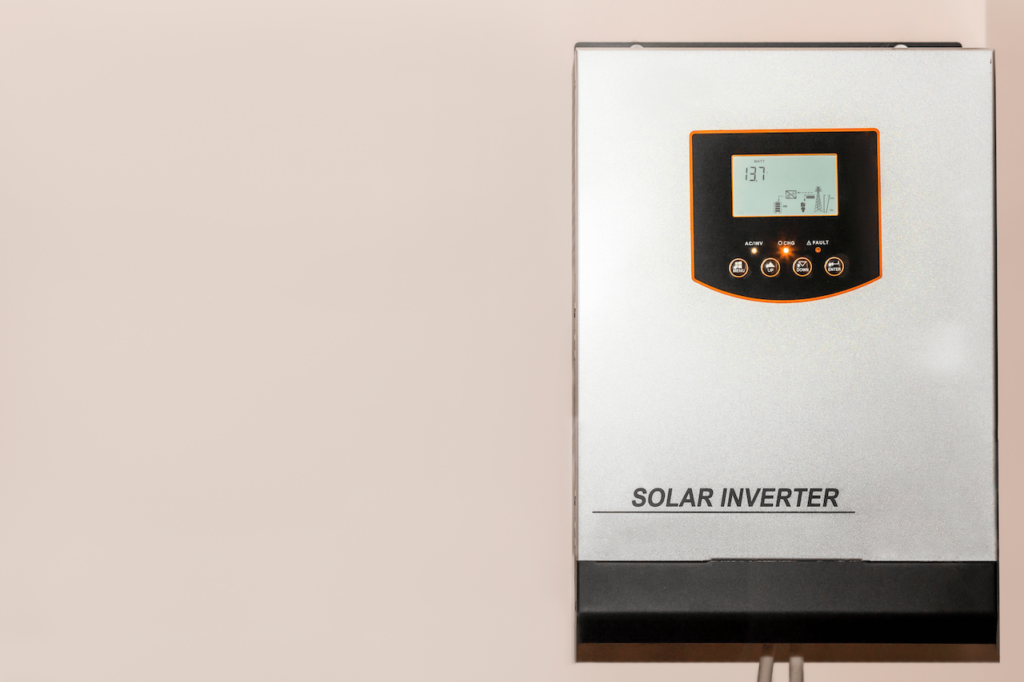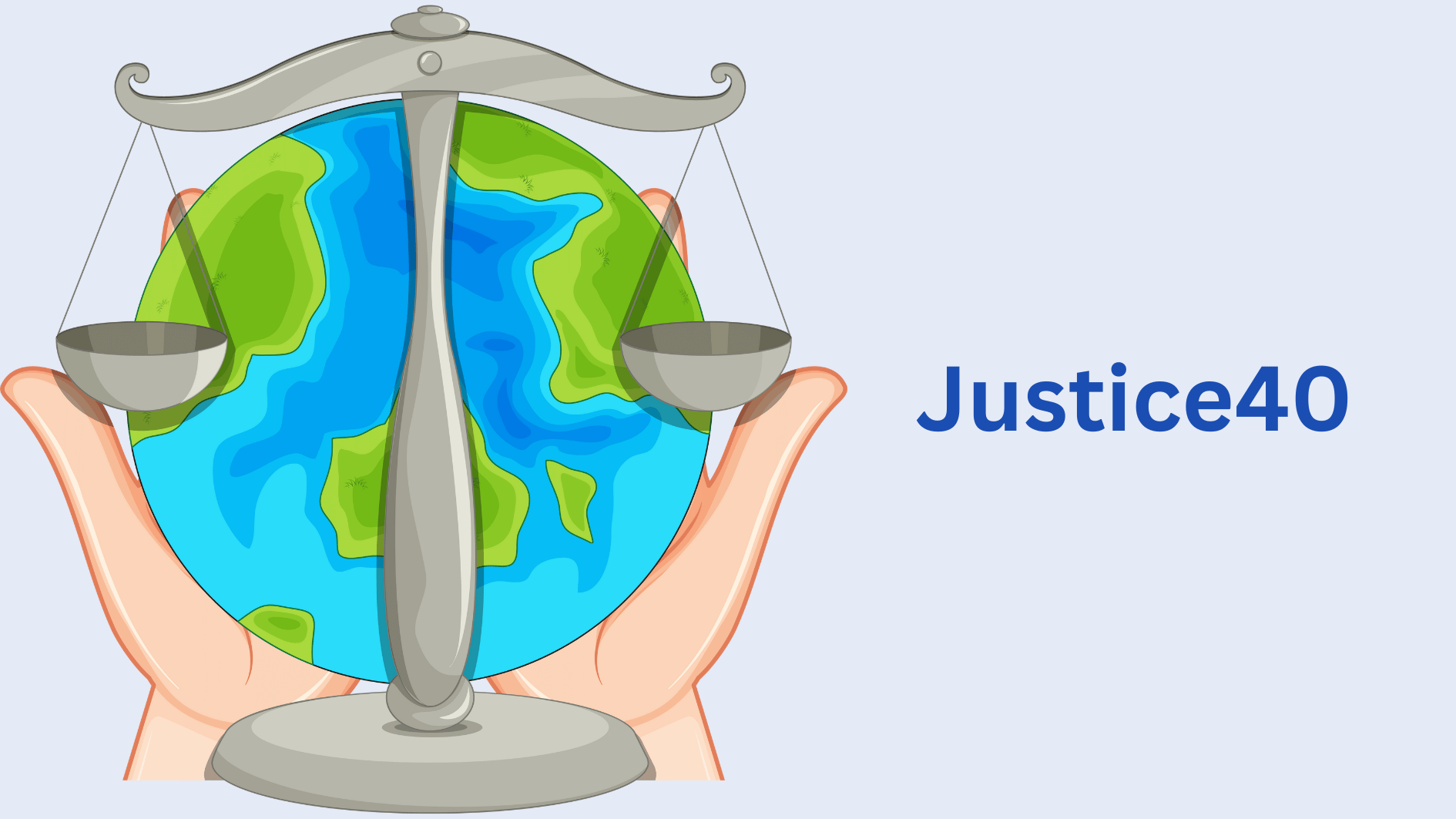Image source: Canva.com
Solar panels harness the power of sunlight through a process called the photovoltaic effect, generating direct current (DC) electricity. However, most household appliances run on alternating current (AC) electricity. This is where solar inverters come into play. Their primary role is to convert the DC electricity produced by solar panels into usable AC electricity, making them an indispensable component of any solar panel system.
Let’s delve into the various types of solar inverters available:
String Inverters
String inverters also referred to as “central” inverters, are the standard choice for most small-scale solar energy setups. In this configuration, every solar panel is linked into a “string,” with the possibility of connecting multiple strings (typically up to three) to a central inverter. The centralized inverter, usually situated on the side of a house, in a garage, or basement, receives the energy generated by the panels and converts it into AC electricity for household use.
Pros
Cost-Effective: String inverters are known for being the most budget-friendly option.
Durability: They boast robust technology, ensuring long-term reliability.
Ease of Maintenance: Positioned in accessible locations, they are straightforward to maintain.
Cons
Performance Dependency: Any decline in the output of one solar panel, such as shading, affects the productivity of all panels on the same string.
Complexity Limitation: While accommodating multiple roof planes, they may not be suitable for intricate system designs or shaded roofs.
Best Suited for:
- Properties with straightforward roof configurations receiving consistent sunlight.
- Homeowners seeking economical solar PV systems without the need for complex installations.
By offering a balance of affordability and reliability, string inverters remain a popular choice for residential solar installations with uncomplicated setups.
Power Optimizers
Power optimizers serve as a middle ground between string inverters and microinverters. Similar to microinverters, power optimizers are situated on the roof alongside individual solar panels. However, unlike microinverters, systems with power optimizers still channel energy to a central inverter.
Instead of converting DC electricity into AC electricity at the panel site, power optimizers adjust the voltage of the DC electricity before it reaches the string inverter. When paired with a string inverter, systems with power optimizers offer enhanced efficiency compared to those using just a string inverter, especially in shading scenarios.
Pros
Enhanced Efficiency: Power optimizers optimize each panel’s output, reducing the impact of shading and improving overall system efficiency.
Cost-Effective: They are generally more affordable than microinverters, making them a budget-friendly option for homeowners.
Panel Monitoring: Power optimizers allow for individual panel performance monitoring, providing valuable insights for maintenance and troubleshooting.
Cons
Increased Cost: Integrating power optimizers with a string inverter typically entails higher upfront costs compared to standard string inverter systems.
Maintenance Challenges: Like microinverters, systems with power optimizers may require more complex maintenance procedures.
Best Suited for:
- Homeowners with roofs that experience shading or have complex configurations, seeking to maximize solar panel performance without the expense of microinverters.
- Those willing to invest slightly more upfront to optimize their solar panel system but prefer a cost-effective alternative to microinverters.
For homeowners seeking to balance performance optimization with cost considerations, power optimizers offer a compelling solution, ensuring efficient energy production even in less-than-ideal solar conditions.
Microinverters
If a string inverter acts as a “central” hub, microinverters function as “distributed” counterparts. In solar PV systems employing microinverters, each solar panel hosts a compact inverter on-site. Instead of channeling energy from all panels to a single inverter, microinverter setups directly convert DC solar energy into AC energy right at the rooftop level.
Pros
Enhanced Performance: Microinverters offer notable performance advantages, particularly for systems with intricate designs or shading issues. By optimizing the output of each panel individually, they effectively mitigate shading impacts and enable panel-level monitoring for system optimization.
Cons
Higher Cost: Microinverters entail a substantial upfront investment compared to string inverters, making them a more expensive option.
Maintenance Challenges: The rooftop location of microinverters can pose challenges for maintenance and repair tasks, potentially increasing associated costs and complexities.
Best Suited for:
- Solar systems with panels oriented in multiple directions, where maximizing solar production in limited space is crucial.
- Homeowners seeking to optimize energy output in shaded environments or properties with complex roof configurations featuring gables, chimneys, or other obstructions.
Microinverters present an ideal solution for homeowners prioritizing performance optimization and panel-level monitoring, especially in scenarios where shading or complex roof designs pose challenges to traditional string inverter setups.
Module-Level Power Electronics (MLPEs)
Collectively known as Module-Level Power Electronics (MLPEs), microinverters and power optimizers provide specific advantages over traditional string inverters, including shade tolerance and individual panel monitoring. However, MLPEs generally come at a higher cost, necessitating a careful evaluation of options based on the specific requirements of your solar installation.

Essential Metrics for Solar Inverters
Exploring solar inverter options involves considering various factors to ensure optimal performance and reliability. Here are some essential metrics to evaluate:
Efficiency
The efficiency of a solar inverter reflects its ability to convert DC electricity from solar panels into usable AC electricity. Inverters with higher efficiency minimize energy losses during conversion, ultimately maximizing the output of your panel system. While higher efficiency inverters may come with a higher price tag, they offer greater electricity production benefits.
Warranty
When selecting a solar inverter, pay attention to the warranty offered by the manufacturer. Most reputable companies provide warranties ranging from 10 to 25 years. It’s crucial to ensure that the warranty duration matches that of your solar panels. Additionally, consider opting for extended warranties for added peace of mind, either through the manufacturer or your installer.
Key points
1. Role of Solar Inverters: Solar inverters are essential for converting the direct current (DC) electricity generated by solar panels into usable alternating current (AC) electricity for household appliances.
2. Types of Solar Inverters: String Inverters (cost-effective and durable), Power Optimizers (offer enhanced efficiency by optimizing each panel’s output), Microinverters (provide superior performance and panel-level monitoring).
3. Considerations for Choosing Inverters: efficiency and warranty
4. Balancing Performance and Cost: The choice of solar inverter depends on factors such as roof configuration, shading, budget, and desired performance optimization.
5. Module-Level Power Electronics (MLPEs): Microinverters and power optimizers, collectively known as MLPEs, offer advantages such as shade tolerance and panel-level monitoring but come at a higher cost compared to traditional string inverters.
6. Evaluation Metrics: Efficiency and warranty are crucial metrics to consider when evaluating solar inverters. Higher efficiency and longer warranty durations generally translate to better performance and reliability over time.





